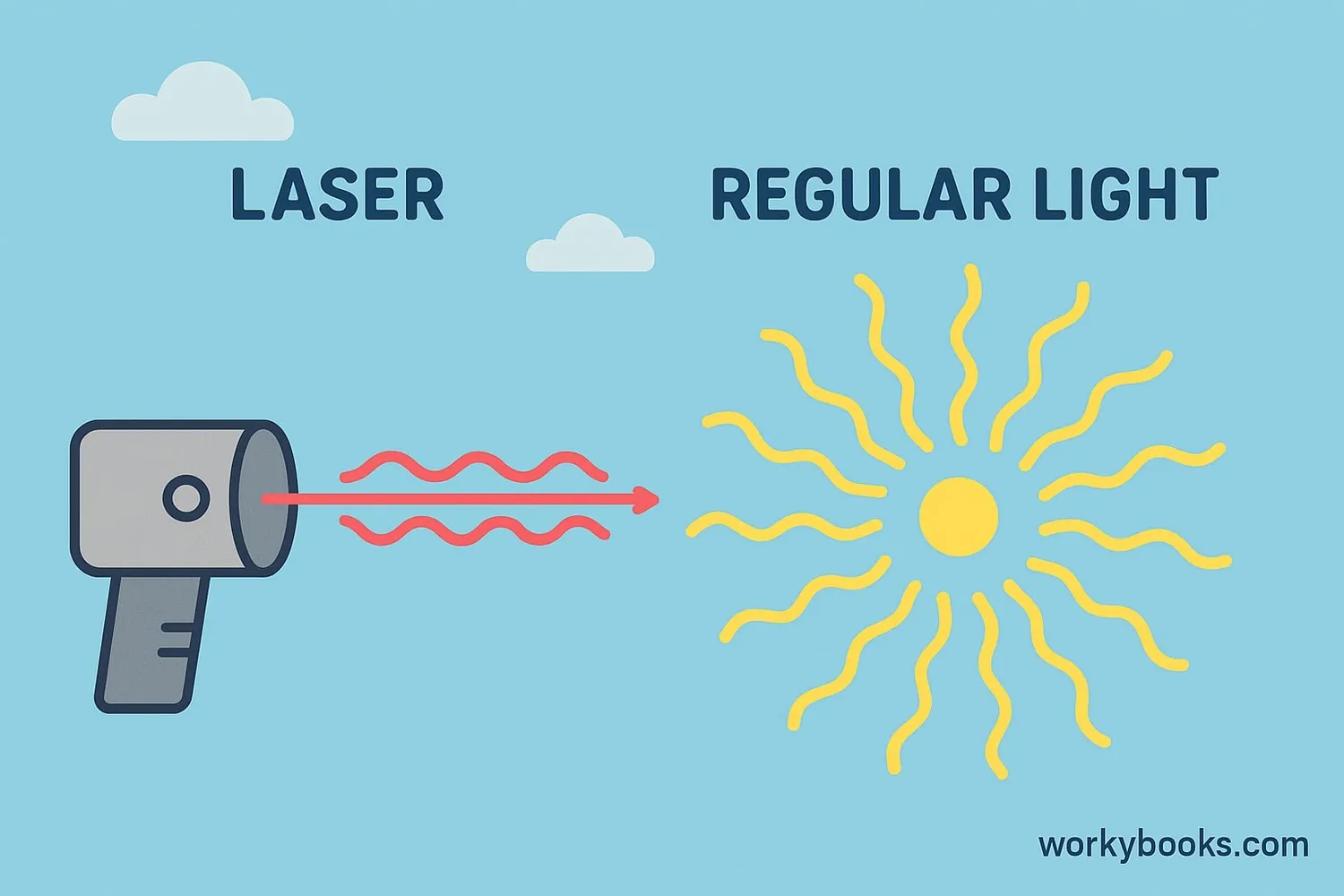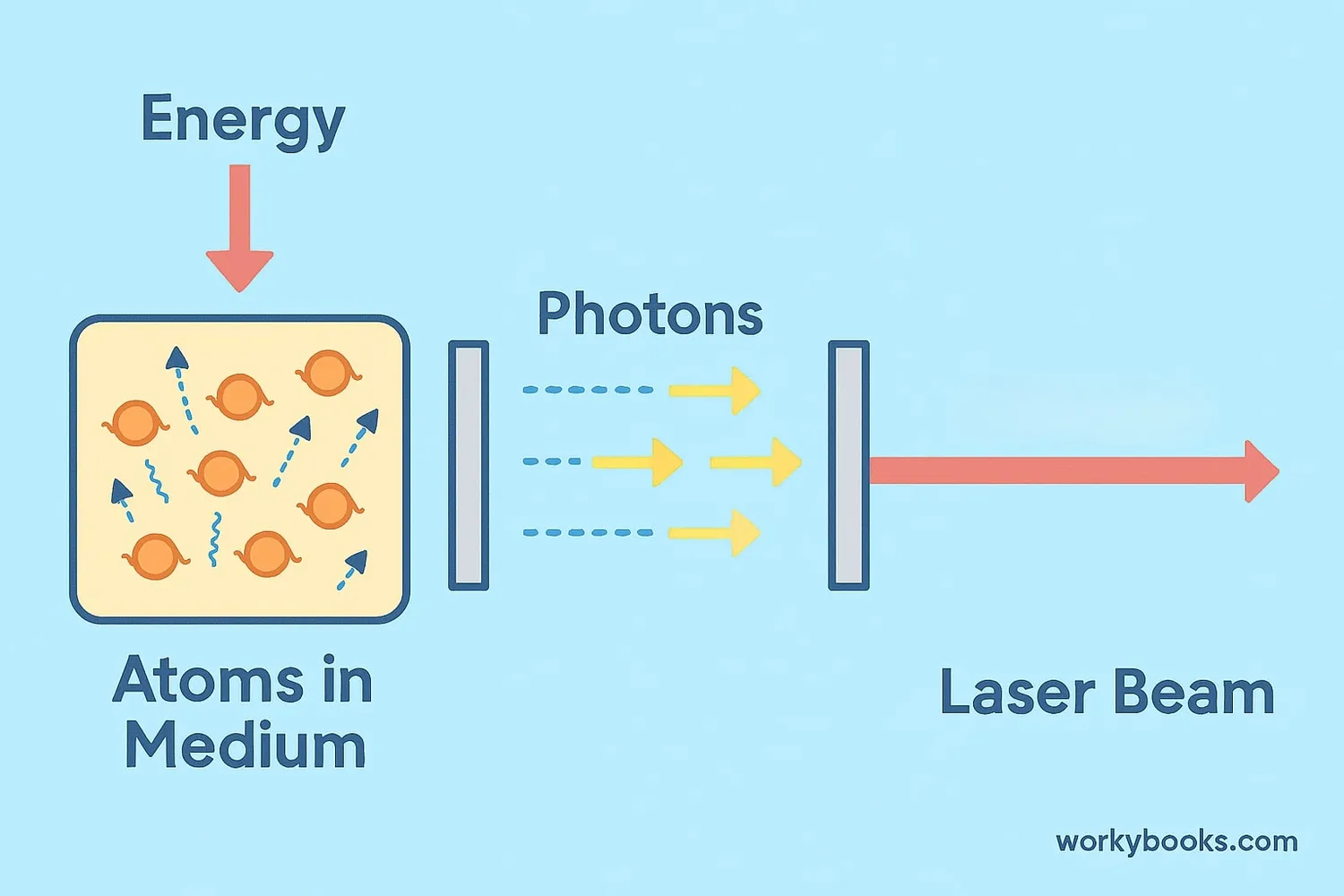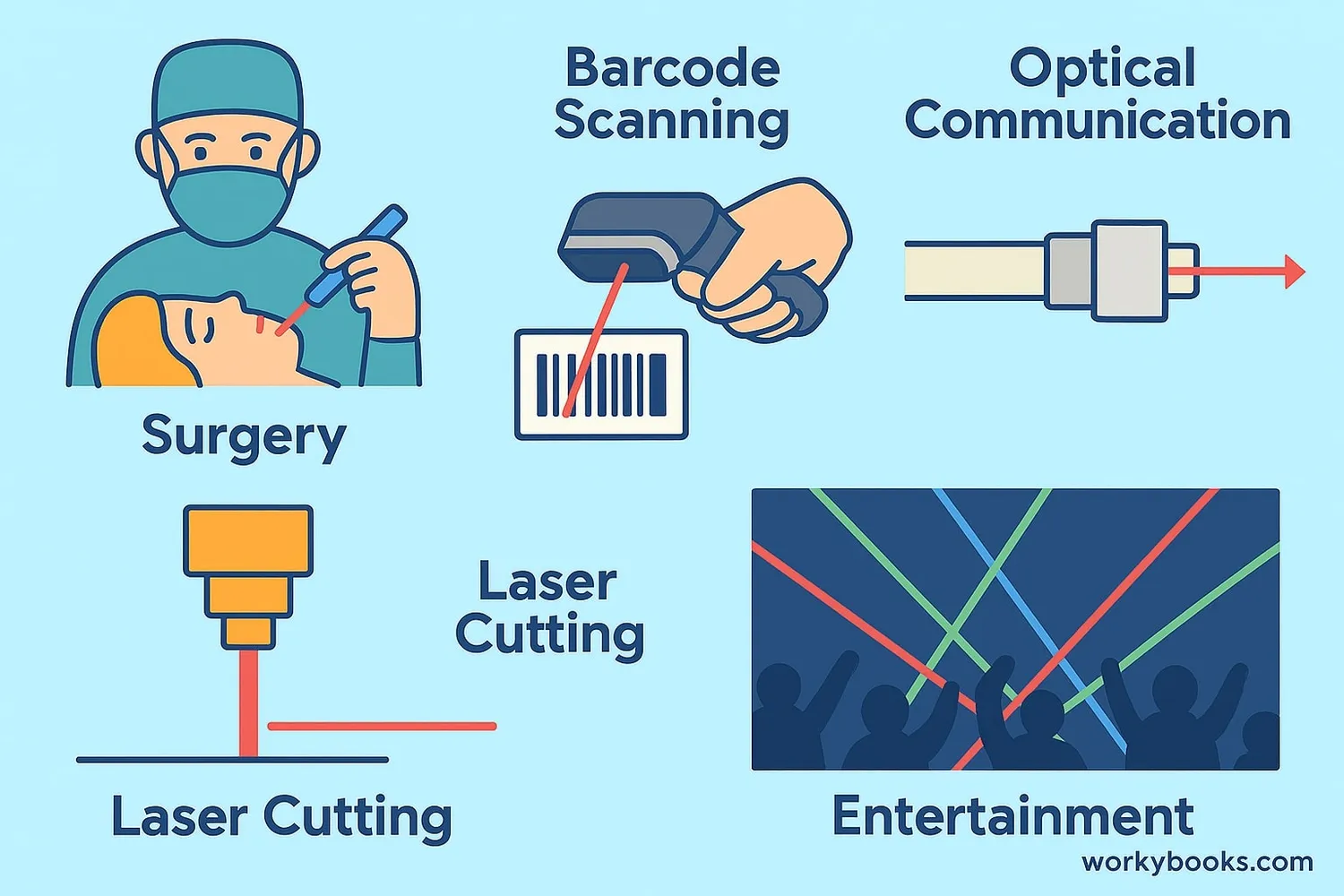Laser - Definition, Examples, Quiz, FAQ, Trivia
Discover how lasers work and their amazing applications in our world
What is a Laser?

A laser is a special device that creates an intense, focused beam of light. The word "laser" is actually an acronym that stands for Light Amplification by Stimulated Emission of Radiation.
Unlike regular light from a flashlight or the sun that spreads out in many directions, laser light is coherent, meaning all the light waves are aligned and travel in the same direction. This creates a beam that can stay focused over long distances and can be extremely precise.
Key Fact
The first working laser was built in 1960 by Theodore Maiman, using a synthetic ruby crystal.
How Lasers Work

Lasers work through a process called stimulated emission. Here's how it works:
Energy Input
Energy is added to a special material (called the gain medium)
Atom Excitation
Atoms in the material absorb energy and become "excited"
Photon Emission
Excited atoms release photons (light particles) when they return to normal state
Stimulated Emission
These photons stimulate other excited atoms to release identical photons
Amplification
Mirrors reflect photons back and forth, creating a chain reaction
Beam Output
One mirror is partially transparent, allowing the laser beam to escape
This process creates light that has three special properties:
Coherence: All light waves are in phase with each other
Monochromaticity: The light is a single, pure color (wavelength)
Directionality: The beam travels in a straight line with little spreading
Science Note
Different materials create different colored lasers. Ruby crystals make red light, while neodymium-doped yttrium aluminum garnet (Nd:YAG) crystals create infrared light.
Laser Applications

Lasers are used in many different fields because of their unique properties. Here are some important applications:
Medicine
Used in surgeries, eye operations, dental procedures, and skin treatments
Manufacturing
Precision cutting, welding, engraving, and 3D printing
Communications
Fiber optics for internet, phone, and television signals
Entertainment
Light shows, laser tag, DVD and Blu-ray players
Measurement
Laser levels, rangefinders, and speed detection
Retail
Barcode scanners at stores and supermarkets
Scientists continue to find new uses for lasers in fields like:
• Scientific research
• Environmental monitoring
• Defense systems
• Space exploration
Technology Note
Fiber optic cables use lasers to transmit information as pulses of light, allowing for incredibly fast internet speeds and clear communication over long distances.
Laser Knowledge Quiz
Test your understanding of lasers with this quiz. Answer all 5 questions to see how much you've learned.
Frequently Asked Questions
Here are answers to some common questions about lasers:
Laser Trivia
Discover some fascinating facts about lasers!
Powerful Beams
The most powerful laser in the world can produce a beam with a peak power of 5.3 petawatts - that's 5.3 million billion watts! However, this immense power lasts for just a tiny fraction of a second.
Precise Measurement
Lasers are so precise that they were used to measure the distance from Earth to the Moon. Apollo astronauts placed reflectors on the Moon's surface, and scientists bounce laser beams off them to measure the distance with accuracy within a few centimeters!
Speed of Light
Laser light in fiber optic cables can travel at about two-thirds the speed of light in a vacuum. This incredible speed allows information to travel around the world in fractions of a second.
Theoretical First
Albert Einstein first theorized about stimulated emission - the principle behind lasers - in 1917. However, it took more than 40 years for technology to advance enough to build the first working laser.


